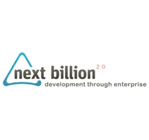Bringing Digital Financial Inclusion to Women: The Impact of an Integrated Ecosystem Approach

Intellecap’s content partnership with Next Billion, one of the largest online publications from the ecosystem, will enable a host of authors from India and Africa to share their ideas, insights and expertise through this yearlong special series which began in 2018.
Ankur Seth, Engagement Manager and Neha Kumar, Senior Associate, Intellecap India, as part of our yearlong content partnership with Next Billion contribute the fifth story in the series.
As a quick recap the first story in this Next Billion Series was on ‘India’s Impact Capital Vacuum’ which was authored by Intellecap’s Gagandeep Bakshi and Sameer Gaud, and the second story was ‘The Definition of Insanity: Why Repeating the Same Approach to Enterprise Support is Failing Africa’s SMEs’ which was authored by Intellecap Africa’s Mercy Mangeni and Joshua Murima. The third article by Rajat Chabba, VP Intellecap India and Sheena Raikundalia, Lead, Intellecap Africa was around ‘Inexpensive Impact: The Case for Frugal Innovations’. The fourth article by Santosh Singh, Associate Partner and Ankit Gupta, Manager, Intellecap India was titled ‘Building an Ecosystem to Save an Ecosystem: How Facilitating Climate Finance for MSME’s can fight Global Climate Change’
Titled ‘Bringing Digital Financial Inclusion to Women: The Impact of an Integrated Ecosystem Approach’ the fifth article talks about how despite global initiatives aimed at catalyzing formal banking and increasing the usage of digital channels, almost 1 billion women still remain excluded from the global financial economy.
Sharing data more closer to home, the authors opine how close to 14% of total establishments in India are managed by women, and that these businesses provide employment to roughly 13.5 million people. But while the Indian economy has grown at an accelerated pace in the past decade, the workforce participation of women has seen a decline from 35% in 2005 to 26% in 2018. The authors state further that this clearly indicates that either the growth in the economic empowerment of women has not been in sync with the economic growth of the country, or women are not included in the formal economy, despite performing many economic activities, and how global statistics reveal a similar issue, with 56% of the unbanked being women and just 41% of women being part of the work force.
The authors highlight that while there have been a slew of global initiatives introduced to integrate women into the formal economy, the fact is that the comprehensive financial inclusion of women is still a distant dream. They state the compelling example that just having a bank account is not sufficient to consider women financially included, since In India, almost half of all accounts are dormant and don’t provide the real benefits that digital financial services (DFS) can bring, such as access to credit, reductions in cash risk due to the use of mobile money transfers and savings, increases in disposable income, and better personal financial management.
The authors go on to talk about the barriers to women’s financial inclusion , shedding light on the fact that in India this is more so, since traditionally, women in rural communities are highly reliant on men to make financial decisions for the household. They also state that women in India are also held back by the psychological barriers they face while accessing DFS. These barriers include reluctance to own a mobile phone, self-doubt while using a smartphone, hesitation in attending training events due to the unequal gender ratio at the training centers, and a broader fear of technology. These obstacles are amplified by the absence of a local support system, in the form of female change agents or women support groups led by more progressive members of the community.
The foundation for financial inclusion, they highlight, stands on three pillars – access, trust and comfort. But this foundation cannot be built through a single government policy or a development agency in isolation. Instead, it will entail a range of partnerships across technology, banking, the rural-focused private sector and government departments. This is where rural value chains can create an integrated digital financial ecosystem for women. Unless women reliably find value in using their bank accounts, no initiative can spur their financial inclusion.
The authors then go on to talk about a model for digitizing financial access for women, and speak about how Intellecap has digitized over 800 women across 30 villages in India by building an integrated digital financial ecosystem for them, following the approach outlined above.
Getting into the details, the authors share details of how this was accomplished by implementing integrated rural digital financial ecosystem pilots for women-dominant agriculture value chains, including dairy, poultry and food processing, across selected geographies in India. The pilots have demonstrated success on several primary metrics such as income, savings and productive time for smallholder women farmers. As secondary gains, these women have built higher awareness of digital channels of transactions, and gained more financial independence through better control over their income and expenses.
Speaking also about the dairy value chain digitization pilot, they present data of how 36% of financially excluded women in the pilot villages were included in the formal economy, and 80% of the participating women dairy farmers also reported an increase in savings. Through the pilot for the food and beverages value chain, 75% of self-help groups for women entrepreneurs improved sales in their businesses through market linkages using digital platforms.
The authors end with how this unique value propositions of the pilot partners – which ranged from rural value chain aggregators to payment/commercial banks and lending fintechs – have ensured that these pilots continue to scale. The integrated ecosystem model endeavors to first establish the roots of digital financial services deployments, and then branch out in phases. It therefore presents the most sustainable way to replicate digitization across varied value chains, both formal and informal, enabling comprehensive inclusion for women across geographies.
View full article



